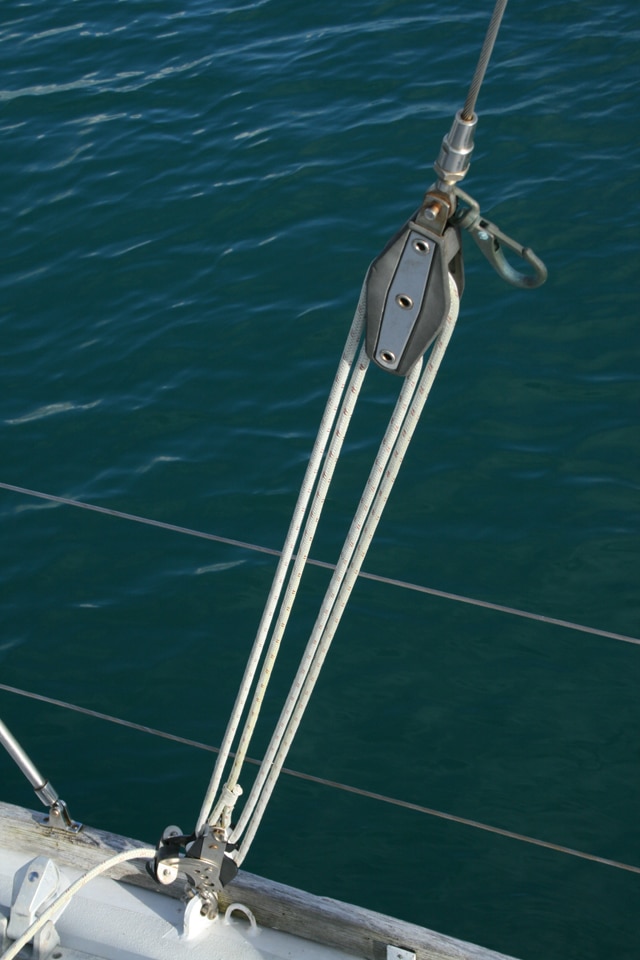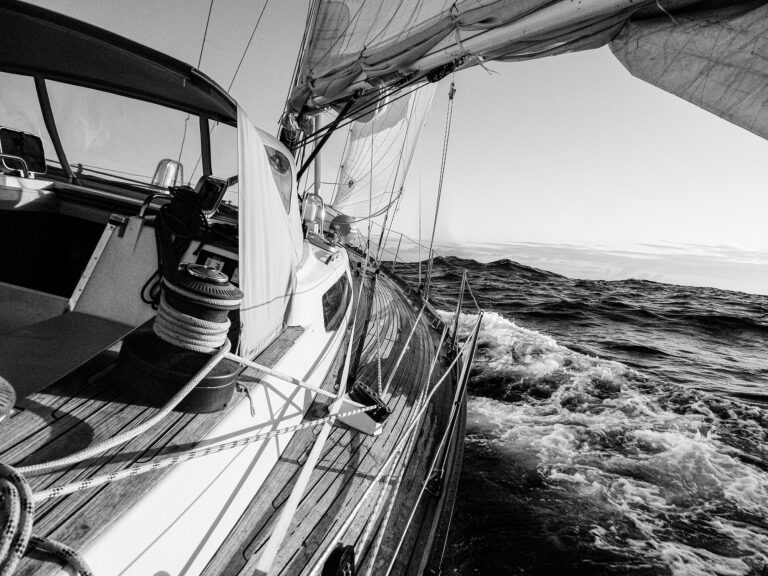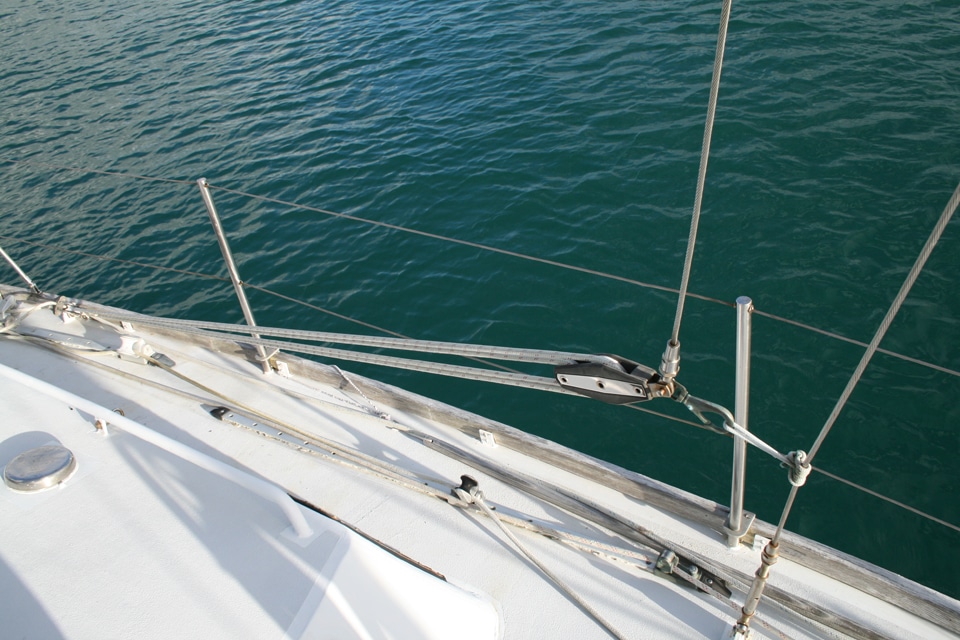
A block and tackle runner pulled forward
A popular running-backstay solution is a wire stay attached to a block and tackle with a 4-to-1 purchase and a cam cleat. This system, while affordable and relatively simple, only generates approximately 300 pounds of torque. While this is enough for backup support of the mast, it won’t be very useful in actually shaping the mast for high performance unless it’s aggressively sweated. Also, the multiple purchases create considerable friction and can be somewhat cranky when you’re trying to ease the tackle forward for stowing. Alvah Simon
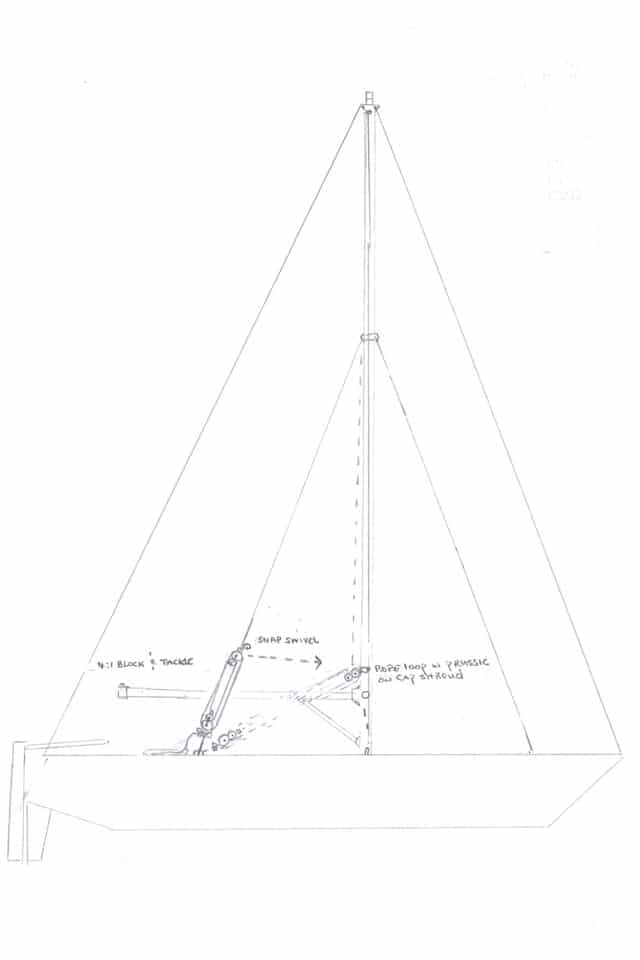
runner2.jpg
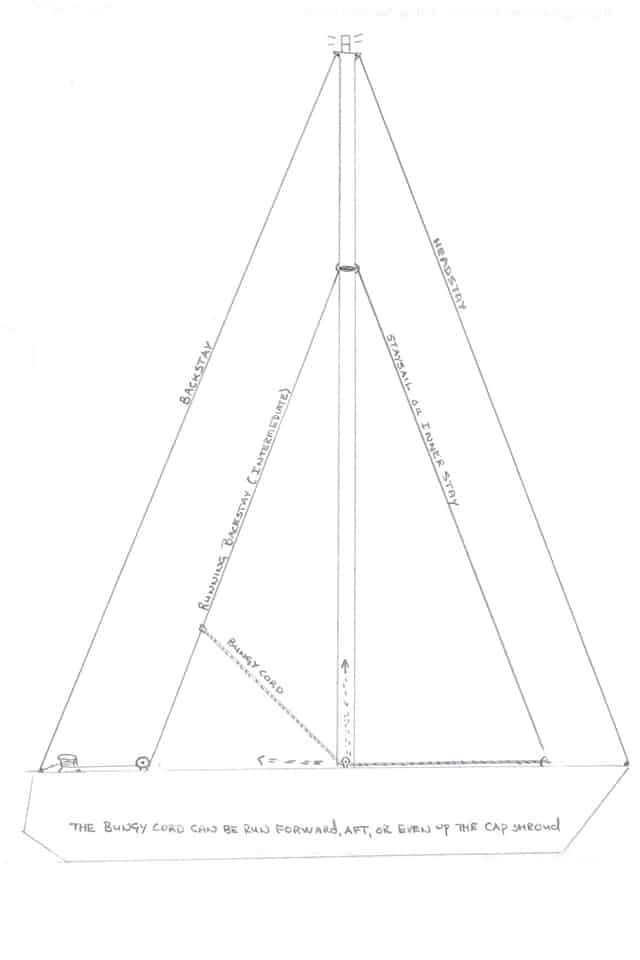
runner3.jpg
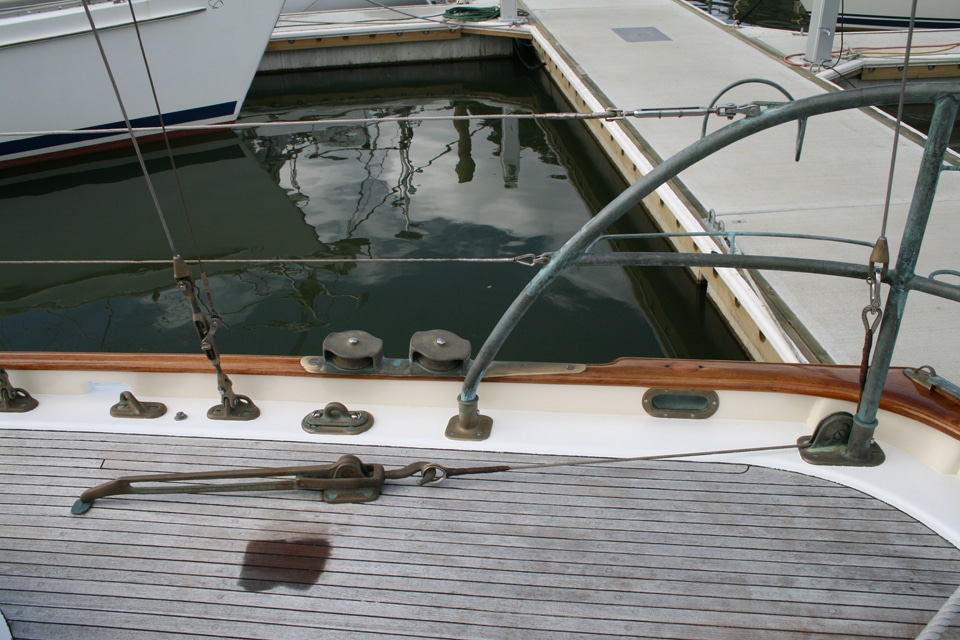
Highfield lever
The most traditional running-backstay setup uses a highfield lever, an over-center mechanism that, with the flip of the long handle, exerts considerable tension on the stay. But these levers don’t have much throw, and when released, they don’t create enough sag to run the stay well forward for stowage. A hook instead of a thimble on the stay end allows the wire to be released and secured far enough forward so the boom can be eased to its maximum downwind position. These levers, which are normally quite robust, are also quite expensive. Alvah Simon
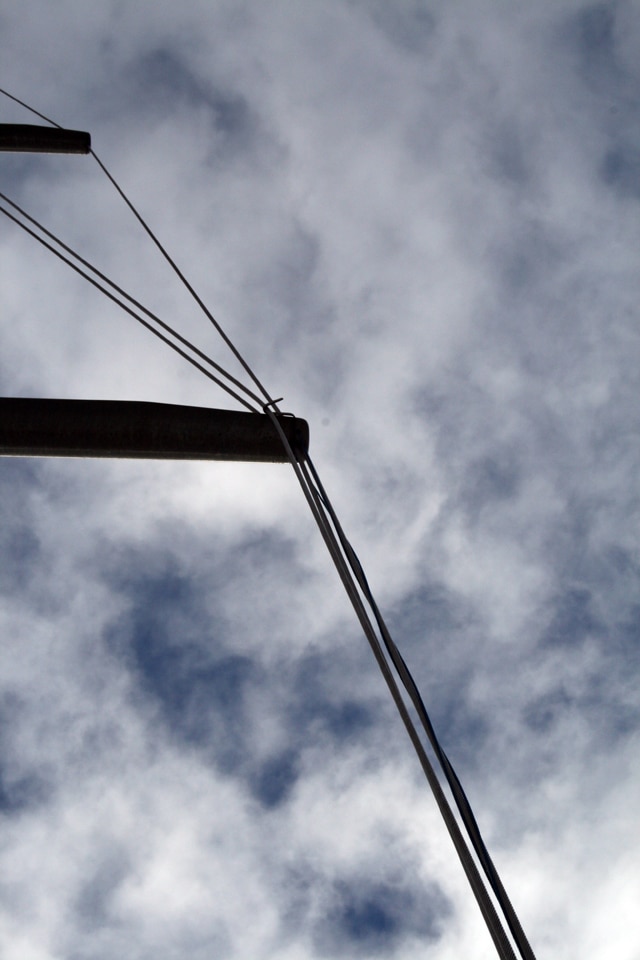
An aft-facing hook to capture the lazy stay.
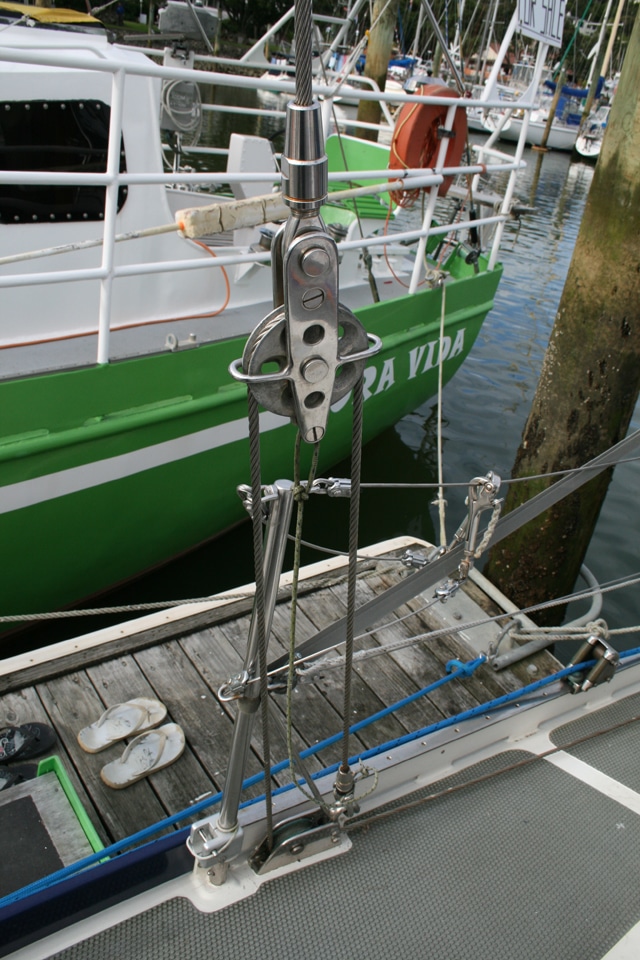
runner6.jpg

Prusik knot
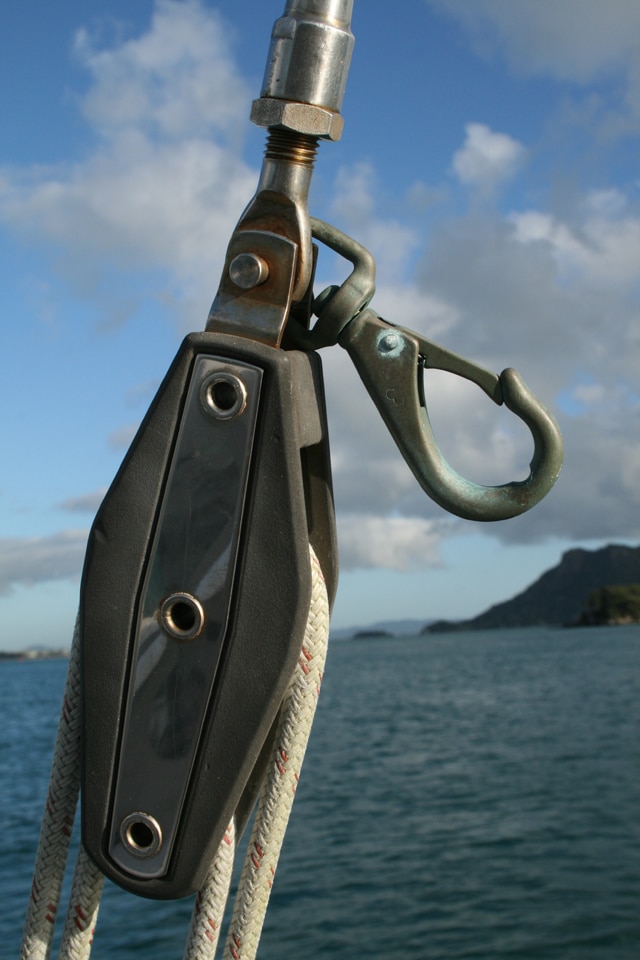
Bronze shackle
